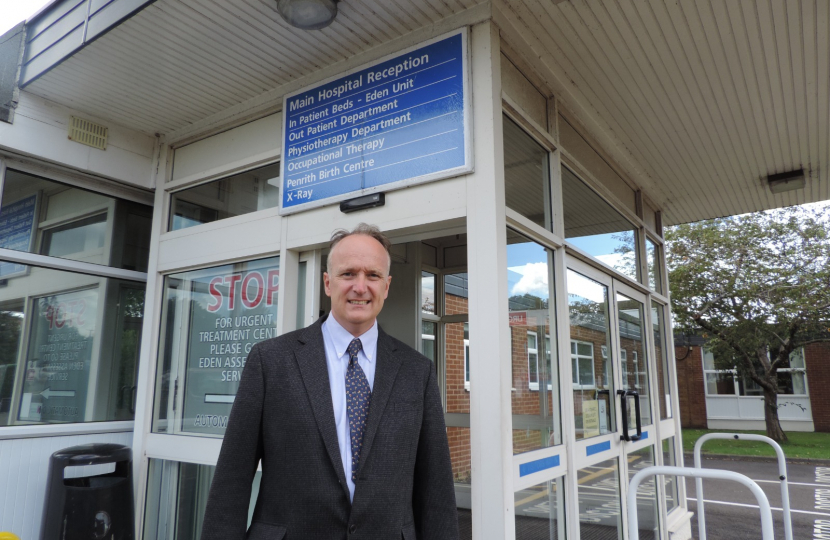
Dr Neil Hudson MP has welcomed the announcement that Physician Associates and Anaesthesia Associates will be regulated by the General Medical Council (GMC), boosting patient safety and supporting plans to expand medical associate roles in the NHS to relieve pressure on doctors.
The Government will bring forward legislation this month to allow the GMC to begin the process of regulating medical associates, medically trained healthcare professionals who work alongside doctors to care for patients.
The GMC will set standards of practice, education and training, and operate fitness to practise procedures, ensuring that Physician Associates and Anaesthesia Associates have the same levels of regulatory oversight and accountability as doctors and other regulated healthcare professionals. The regulations will come into force at the end of 2024.
Regulation and growth of these roles will support plans to reduce pressure on frontline services and improve access for patients.
Dr Neil Hudson MP said:
"Holding Physician Associates and Anaesthesia Associated to the highest professional standards through standardised regulations is a crucial part of our Conservative Government's mission to boost NHS workforce numbers, cut waiting lists and improve patient welfare.
“This move is a crucial part of our Conservative Government's mission to boost NHS workforce numbers, cut waiting lists and improve patient welfare.”
There are currently around 1,500 Physician Associates working in hospitals and 1,700 in primary-care settings. There are around 320 Anaesthesia Associates. The Long Term Workforce Plan sets out plans to increase the Physician Associate workforce to 10,000 by 2036 to 2037 and the Anaesthesia Associate workforce to 2,000 over the same period.
Physician Associates work alongside doctors providing medical care as an integral part of the multi-disciplinary team. They can work autonomously, but always under the supervision of a fully trained and experienced doctor.
Staff working in the role are also trained to do clinical duties such as taking medical histories, carrying out physical examinations, and developing and delivering treatment and management plans.
Under the supervision of a medically qualified anaesthetist, anaesthesia associates have responsibilities such as reviewing patients before surgery, initiating and managing medications, administering fluid and blood therapy during surgery, and ensuring there is a plan for patients following their operation.
Regulation will give the GMC responsibility and oversight of doctors, Physician Associates and Anaesthesia Associates, allowing it to take a holistic approach to the education, training and standards of the roles. This will enable a more coordinated approach to regulation and, by making it easier for employers, patients and the public to understand the relationship between these roles and doctors, help to embed them in the workforce.
It is important that the public are able to clearly distinguish between the professions regulated by the GMC. The GMC will make it as easy as possible for anyone to identify individual registrants and to tell if they are a doctor, Physician Associates or Anaesthesia Associate. As part of this, the GMC is actively considering the format for the reference numbers that Anaesthesia Associates and Physician Associates will have when they join the register.
The legislation will also be the blueprint for full-scale reform of all the healthcare professional
regulators. Proposals include:
- Speeding up the registration process for new or retired healthcare workers returning to work, helping the NHS quickly expand its workforce during busy periods.
- Standardised powers and duties that better support consistency across regulators and enables better collaboration across the healthcare sector.
- Less adversarial and more proportionate fitness to practise processes that deliver faster and fairer outcomes for registrants and the public.
Health and Social Care Secretary Victoria Atkins said:
“Physician Associates and Anaesthesia Associates are already making a great contribution to the NHS, supporting doctors to provide faster high quality care for patients.
“This new legislation paves the way for these professionals to be held to the same strict standards as doctors, boosting patient safety.
“This is part of our Long Term Workforce Plan to reform the NHS to ensure it has a workforce fit for the future.”
Dr Navina Evans, Chief Workforce, Training & Education Officer at NHS England said:
“Physician and anaesthesia associates are an important part of clinical teams across the NHS, providing support to thousands of patients with the appropriate supervision every day, while freeing up time for other clinicians.
“Regulation of these internationally recognised roles will ensure the highest standards are met as thousands more are trained to do the role. This is alongside a near doubling of medical school and nursing training places over the next 15 years as part of the NHS Long Term Workforce Plan.”
Charlie Massey, Chief Executive of the General Medical Council said:
“This is a welcome and significant milestone towards bringing physician associates (PAs) and anaesthesia associates (AAs) into regulation.
“We’re pleased to support the development of these valuable professionals recognising the important role they play in the medical workforce. Regulation will help increase the contribution PAs and AAs can make to UK healthcare while keeping patients safe.
“We are working hard to design and deliver detailed regulatory processes for registration, education, standards and fitness to practise for both professions”
Dr Jeanette Dickson, Chair of the Academy of Medical Royal Colleges said:
“We very much welcome the legislation which will allow the proper regulation of Medical Associate Professionals (MAPs) by the General Medical Council. It’s something which, in our opinion, is long overdue. MAPs have been an important part of the workforce since they were first introduced almost two decades ago.
"Now, with the planned expansion of their numbers, regulation will ensure standardisation of their training and assessment. In turn this will support more doctors to deliver the care our patients need. With the healthcare system under so much pressure we are pleased to be getting a safe helping hand.”




